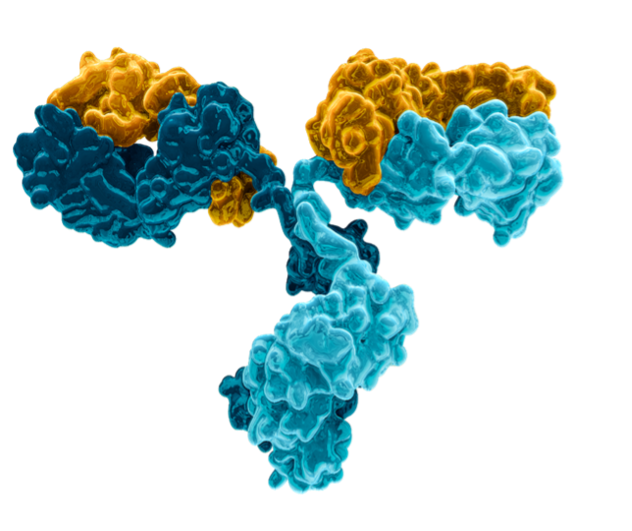Merus N.V., a biotech company based in Utrecht, the Netherlands, has recently announced the FDA approval of BIZENGRI®, a bispecific antibody (zenocutuzumab-zbco) as the first and only treatment indicated for adults with pancreatic adenocarcinoma or non–small cell lung cancer (NSCLC) that are advanced unresectable or metastatic and harbor a neuregulin 1 (NRG1) gene fusion who have disease progression on or after prior systemic therapy.
The approved therapeutic incorporates Merus’ patented DEKK technology that promotes the efficient production of antibodies comprising CH3 domains having particular modifications, including bispecific antibodies that contain two different heavy chains.

The two different heavy chains are indicated in wheat and light blue colors, while the similar light chains are shown in lime yellow.
DEKK refers to four charged substitutions (D:Asp, E:Glu, K:Lys) that were introduced into the Fc domain of the antibody. The general approach followed to develop these modifications and the crystal structure of the DEKK antibody Fc domain (PDB entry 5NSC) were published in 2017 in the Journal of Biological Chemistry authored by Merus and Utrecht University researchers (De Nardis et al. 2017)*. The article describes, among others, how the BioExcel HADDOCK software was used, more than 10 years ago, to evaluate a variety of substitutions. HADDOCK was among the tools used by the scientist to develop and assess mutations, using among others HADDOCK to score the various combinations. This led to identification of a number of candidates that potentially favored the asymmetric assemblies of the heavy chains over the symmetric ones. These combinations of variations were then extensively evaluated and characterized by a battery of biochemical and biophysical methods leading ultimately to the the DEKK modifications, which are integrated into BIZENGRI®.
- C. De Nardis,LJ.A. Hendriks,E. Poirier, T. Arvinte, P. Gros, A.B.H. Bakker, J. de Kruif. A new approach for generating bispecific antibodies based on a common light chain format and the stable architecture of human immunoglobulin G1. J. Biol. Chem. 292, 14706-14717 (2017).
This development work, incorporating HADDOCK as part of integrated in silico and benchwork experimentation nicely illustrates how molecular modelling software like the ones at the core of the EuroHPC BioExcel Center of Excellence for Computational Biomolecular Research can contribute to the early stages in the long path leading to the development of therapeutic antibodies.
